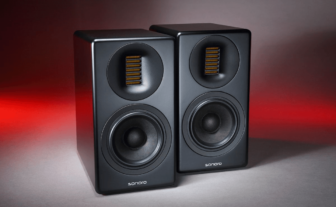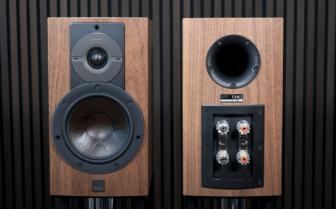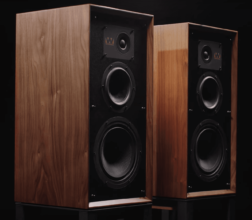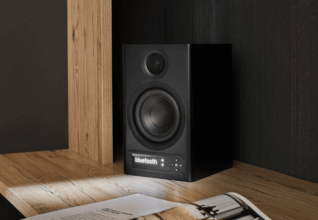Russel K Red 100 Review
The company name Russell K. refers to the developer Russell Kauffman, who has been responsible for many well-known island speakers, such as KEF, for over 50 years. Now he wants to make a fresh start here—with his own products.
by Dominique Klatte
Test & Technology Bookshelf Speakers
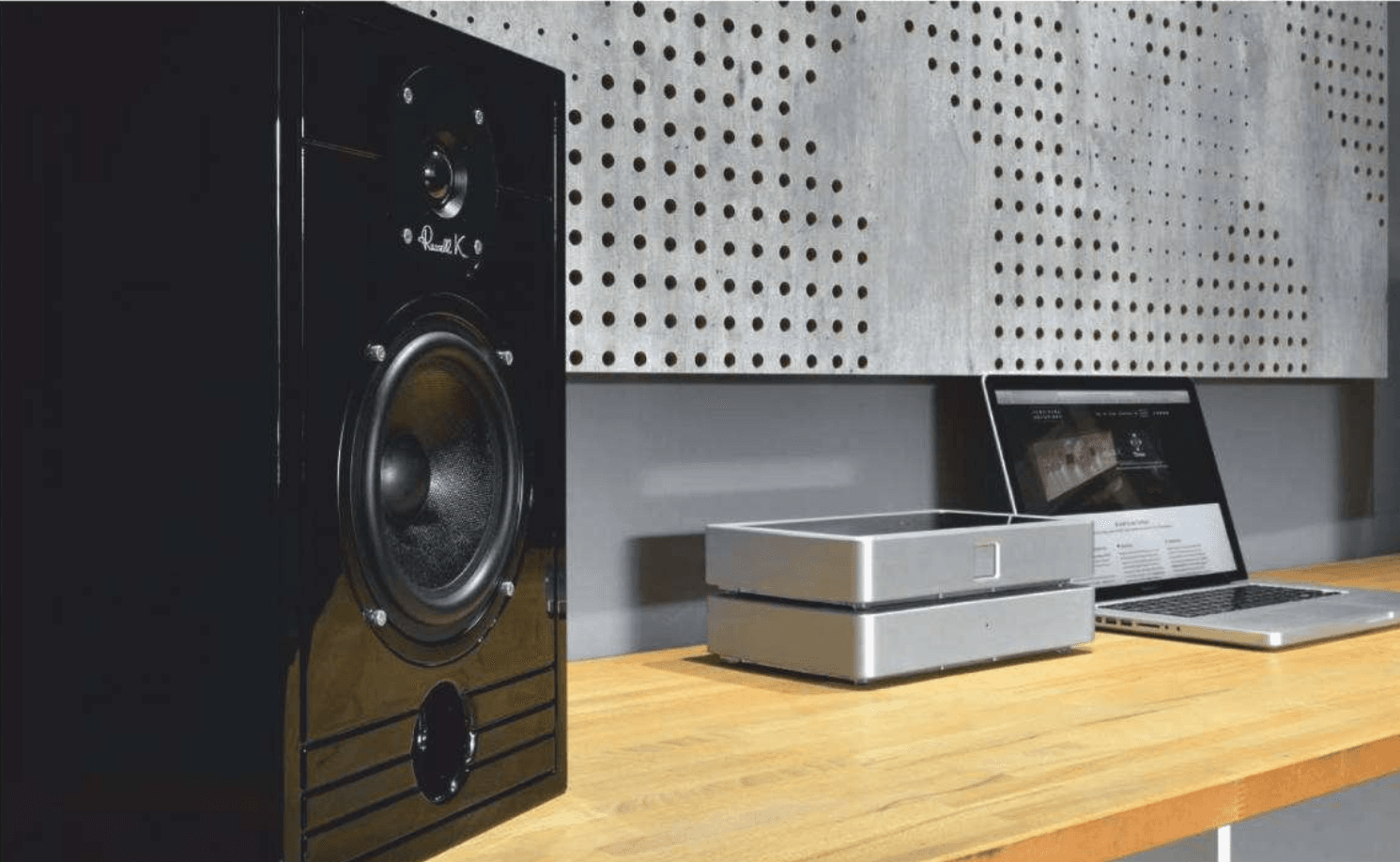
I am always surprised at what compact two-way systems like the Russell K. Red 100 (price per pair: $3675) can achieve. But when a bookshelf speaker leaves me open-mouthed, it’s clear I’m captivated.
But let’s start from the beginning. We are in the middle of a comparison test: Our benchmark is the Mission 770, a British gem, but with a higher price ($4725) and significantly larger dimensions that are hardly suitable for bookshelves. Since it sits on a custom speaker stand, one could almost call it a floor-standing speaker.
With the Russell K. Red 100, you can choose the “stand” according to your own taste and budget. If all else fails, the bass reflex box—typical for a bookshelf speaker “Made in the UK”—plays decently even on a shelf, as we were pleased to find during our test.
As you can read on the website, it was important to mastermind Kauffman that the speakers of his Red series possess qualities of speed, tonal fidelity, and excellent spatial imaging. In a certain way, a comparison with studio monitors for near to mid-field listening would even be appropriate, I think. Knowing that Kauffman previously co-developed some transducers for the BBC, it all comes together.
Further than the BBC
Kauffman favors a completely undamped cabinet—thus going even further than the BBC did, who already in the seventies damped thin-walled multiplex cabinets with a layer of bitumen and a layer of mineral wool (see “Design Philosophy”, p. 27).
Kauffman’s radical approach is meant to serve the aforementioned development goal of achieving a sound that is as lively as possible. He hasn’t skimped and has built a bass reflex cabinet that he must precisely calculate and adapt as perfectly as possible to the drivers. This is reflected in the wall thicknesses of the cabinet, which is available in three real wood veneers: maple, walnut, and mahogany. Rear and side walls are made of 16-millimeter MDF. The front, into which the drivers are very neatly recessed, is even 19 millimeters thick. The obligatory knock test conveys the feeling of a solid construction, but it doesn’t sound over-damped; instead, it suggests a “fresh inherent sound” that the designer intended exactly as such.
Inside the Red 100, perforated boards are installed, which calm the cabinet and at the same time assume an acoustic function (flow resistance). In this way, different frequency ranges should cancel each other out internally, so that no “sound damage” occurs at high amplitudes. These would certainly have massive effects on the tonal balance and the “speed” of the overall design.
The bass reflex port, tuned to 35 Hertz, with its rounded edges, also leaves a good impression and was not noticeable in any situation due to air noises or coloring frequency components. The forward-firing vent, by the way, facilitates close-to-wall placement and also counters an overly rich bass foundation near a boundary surface.
Made of Paper and Silk
When it comes to the drivers, it’s classic British. A generous double-ferrite magnet sets the 6.5-inch woofer-midrange made of impregnated “kraft paper” in motion. The driver shares the frequency band with a woven silk dome measuring 25 millimeters in diameter.
The crossover remains true to the overall concept. It is pleasantly high-quality and minimally designed. With a crossover frequency of 2.2 kHz and a slope of 12 dB/octave, a crossover can be built that causes minimal phase shifts and hardly any other artifacts. However, this assumes in development that all components work together very precisely to achieve the desired sound ideal. Straightening out deficiencies of the drivers with circuit tricks is a “no-go” for Russell K.
Balanced and Agile
That was a lot of technology, I know. But in the end, what counts is how the Red 100 reproduces music. To “get acquainted,” we grabbed a “reference integrated amplifier” from T+A. The signal source was the Dr. Feickert Firebird turntable with an EMT MC system, and the proven Technics SL-G700M2 multiplayer (stereoplay 3/23) supplied us with high-res streams.
The session with the T+A was a pleasure. In almost all areas, the Russell K. played balanced, very agile, and with a slight tendency toward studio analytics. However, since we prefer not to compare apples with oranges, it was important for us to listen to the test candidate with affordable electronics. With an AUDIO score of 8.1 and a maximum level of 98 dB, the 4-ohm speaker should cope even with “smaller gear.” The choice therefore fell on an affordable English integrated amplifier for under $3150.
Astonishingly Deep Foundation
The first track we played was “A Mother” from the legendary DJ-Kicks album by Kruder & Dorfmeister. The electronic track fully drew us in with its groovy bass. The sound image remained stable as a rock even at considerable volumes. Yes, the bass reaches its limits at very loud levels; however, we were quite amazed by the remarkably deep bass extension for a bookshelf speaker, with a lower cutoff frequency of 33 Hertz (-6 dB).
Another plus point of the Red 100 was its vocal reproduction, which could score with beautiful tonal nuances and lots of expression, as we could very well observe with Cassandra Wilson’s jazz classic “You Don’t Know What Love Is” from the 1993 album “Blue Light ‘Til Dawn.” In the midrange, the Russell K. seemed a bit more reserved and informative than the aforementioned Mission 770. In terms of size depiction and level, it couldn’t quite match it, to be fair.
Finally, we indulged in some swing, recorded completely analog at the Munich venue “Unterfahrt” with the Leo Betzl Trio. The very high dynamics of this jazz-on-vinyl LP were conveyed by the English two-way speaker almost uncompressed. This was accompanied by excellent spatial representation and once again a high degree of agility and microdynamics.
CONCLUSION: For most 7Review readers, Russell K. may be a “new kid on the block.” Behind it is a manageable product range but a developer who knows what he’s doing. The Briton’s second smallest speaker, the Red 100, convinced us with a sound that is agile, musical, and also substantial, far from the usual clichés about supposedly British speaker sound. The Red 100 doesn’t reinvent the wheel but shows what’s possible when a manufacturer understands more than just technology. Well done, Mister Kauffman.

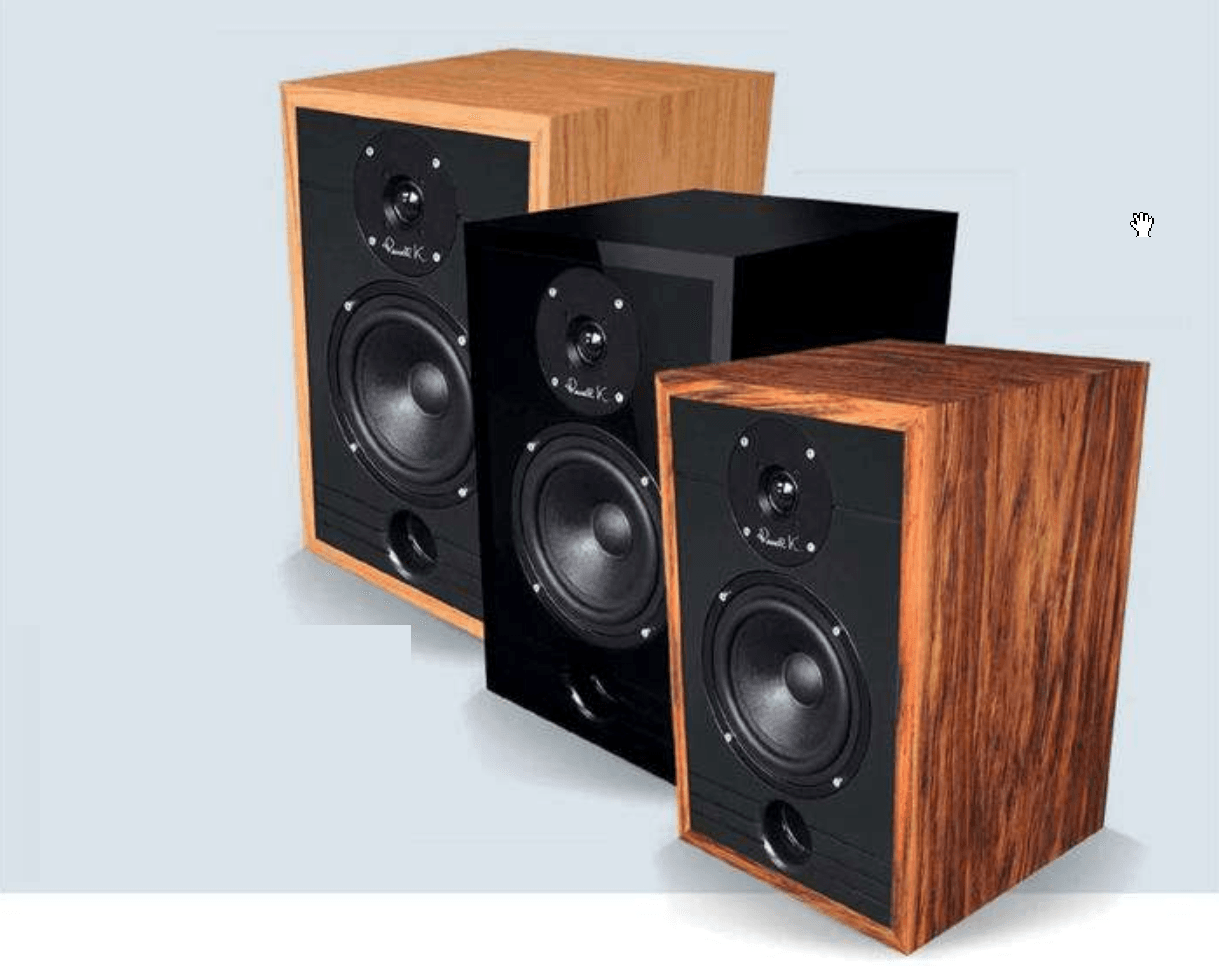
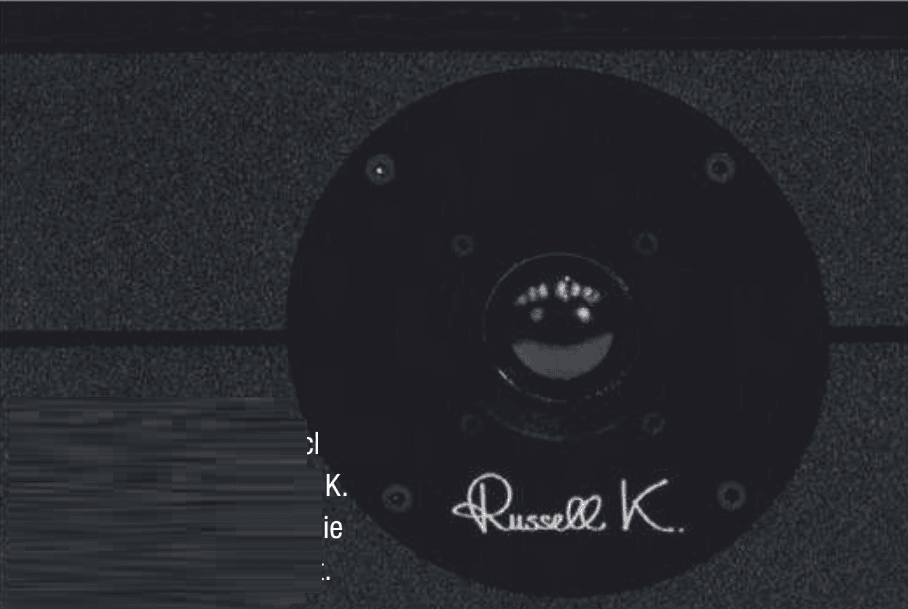
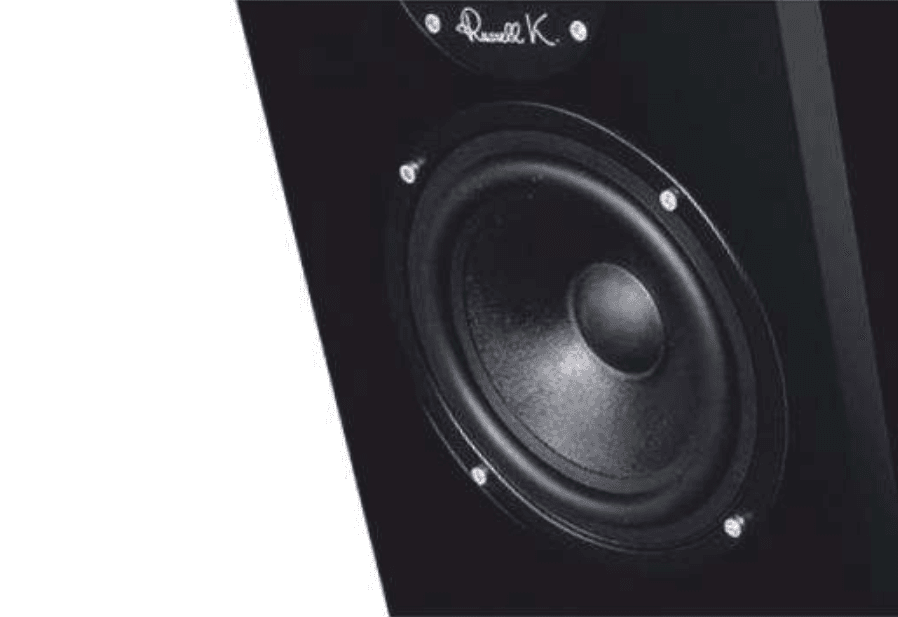
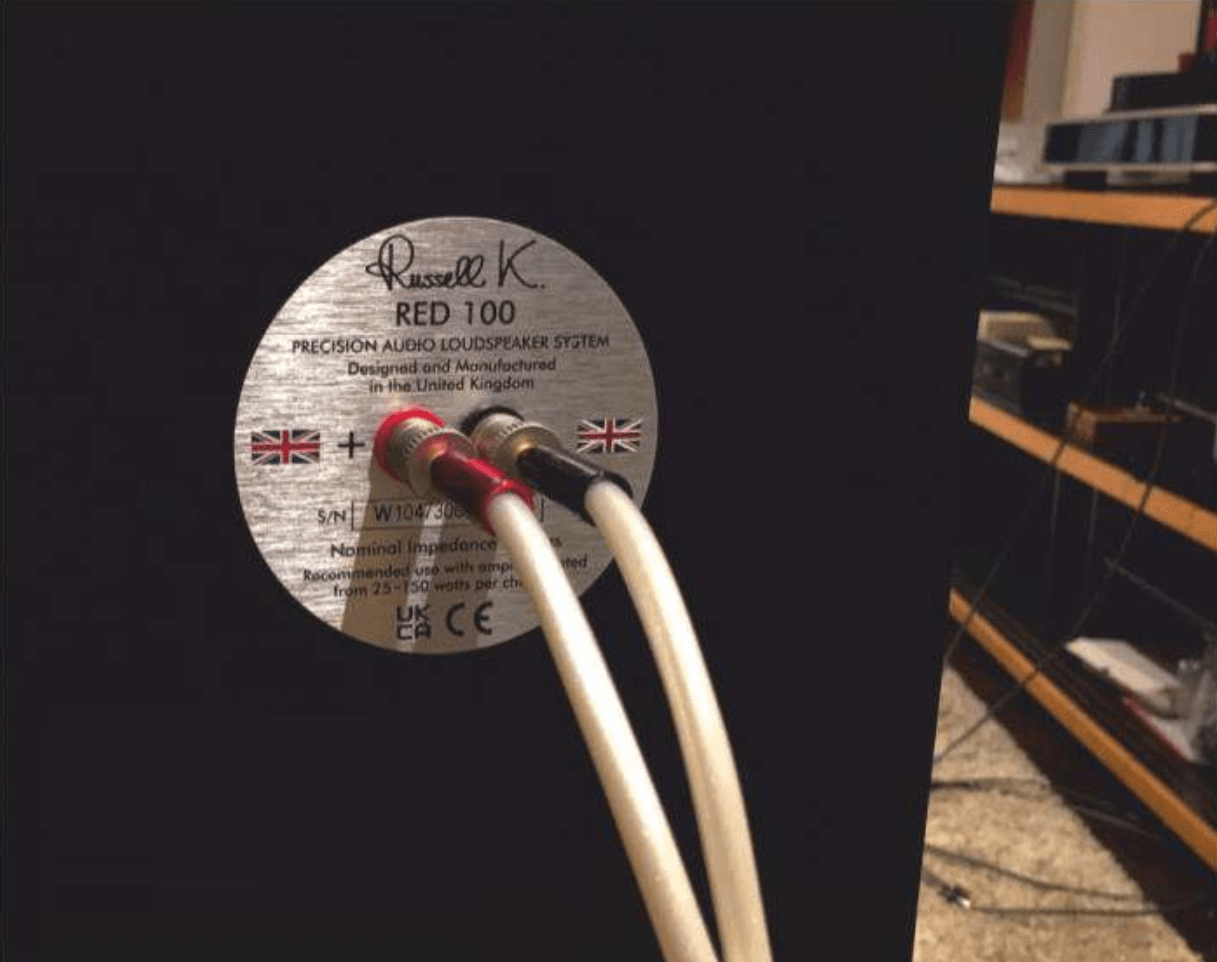
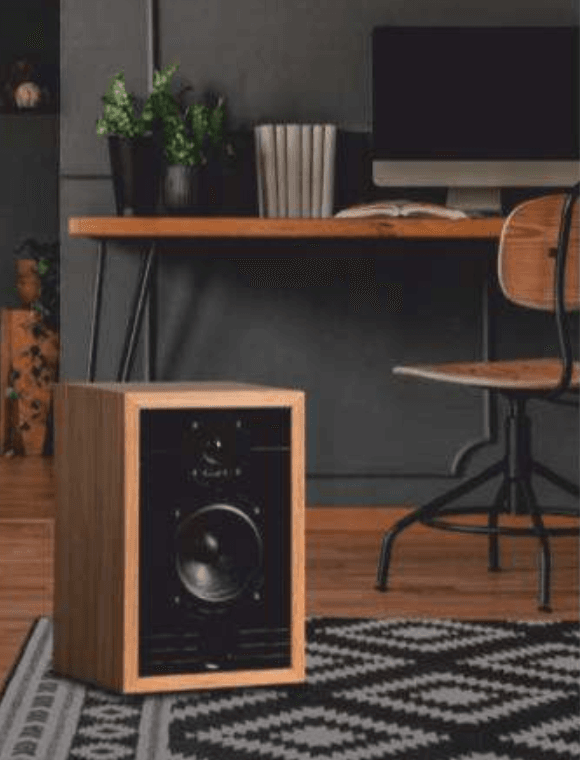
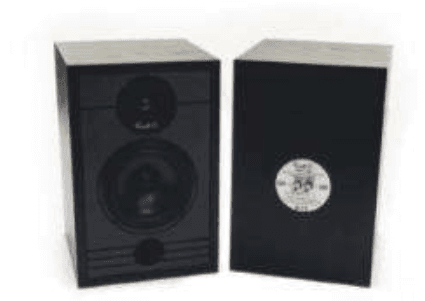
General Information
- List Price: €3500 (approx. $3800)
- Warranty: 2 years
- Dimensions (W × H × D): 26 × 40 × 27 cm
- Weight: 10 kg
- Finish: Veneer / Foil / Lacquer: Yes / No / No
- Colors: Black, Walnut, Mahogany
- Design Principle: 2-way bass reflex
- Room Adaptation: None
- Special Features: None
Pros & Cons
✅ Pros:
✔ Very agile sound
✔ Deep-reaching bass for its size
✔ Expressive vocal reproduction
❌ Cons:
✘ Occasionally slightly congested midrange
✘ Not a powerhouse in terms of volume
Ratings (Converted to a 10-Point Scale)
| Category | Original Score | Max Score | 10-Point Scale |
|---|---|---|---|
| Neutrality | 13 | 20 | 6.5 |
| Resolution | 14 | 20 | 7.0 |
| Imaging | 16 | 20 | 8.0 |
| Dynamics | 17 | 20 | 8.5 |
| Bass | 16 | 20 | 8.0 |
Additional Ratings:
| Category | Original Score | Max Score | 10-Point Scale |
|---|---|---|---|
| Sound Quality | 76 | 100 | 7.6 |
| Lab Analysis | 36 | 50 | 7.2 |
| Build Quality | 35 | 50 | 7.0 |
Audio Benchmark
- Overall Rating: 147 Points (≈ 8.7/10)
- Price/Performance: Very Good
The Design Philosophy
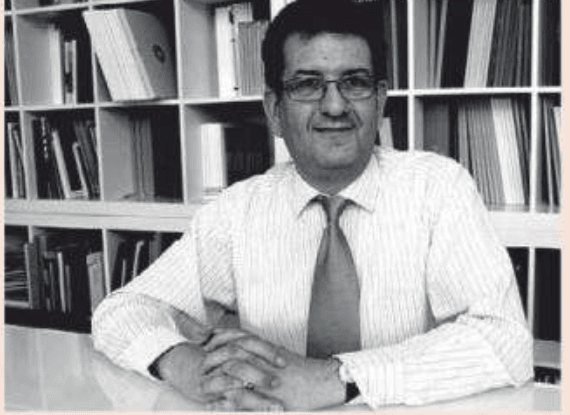
Russell Kauffman fundamentally forgoes damping or insulation measures. He regards the cabinets of his designs more like an instrument maker. His cabinets should not be acoustically dead, like for example with Wilson Audio, but should resonate in a controlled manner and thus, together with the drivers, create a desired overall sound. Similar to the analog specialists at Rega, Kauffman is also concerned with storing as little energy as possible. Because unlike the BBC, he uses somewhat thicker cabinet walls—and not thin ones with heavy bitumen pads for damping. In his view, such pads are good for the midrange but, under high pressure and correspondingly strong bending, they soften the bass reproduction.
Russell K. Red 100
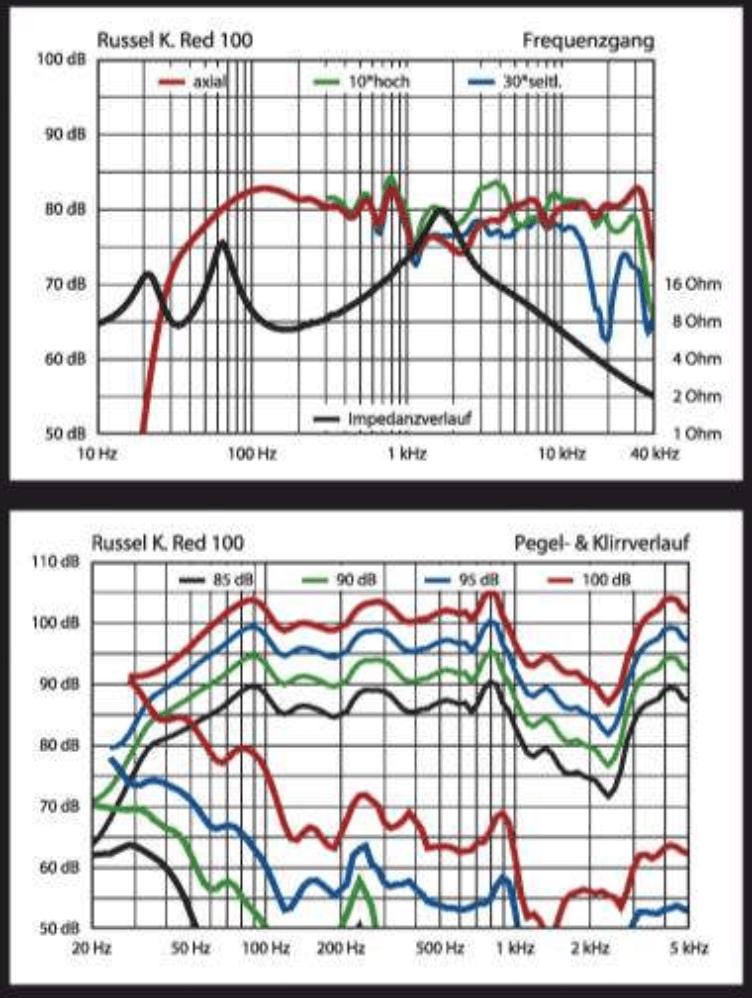
Frequency response with a certain listening angle-dependent midrange dip. Around 800 Hz, a level peak is noticeable, to which sound from the front-firing bass reflex port contributes. Bass extension (42/33 Hz -3/-6 dB) and maximum level of 98 dBSPL are remarkable for a speaker of this size. Unobtrusive distortion profile (below). Long decay at 600 Hz, otherwise clean time behavior. Low efficiency (79 dB/2V), but favorable impedance curve for amplifiers with high output impedance: 8 Ω is not undershot in the bass, the impedance peak at 1.7 kHz coincides with the frequency response dip, the latter thus becomes weaker rather than stronger. Power requirement maximum level/100 dBSPL: 37/59 W/8 Ω. AUDIO Score 8.1
Russell K Red 100 Speakers Review.. #speakers #hifi #audiophile #speakerreview
Dimensions H- 400mm W-260mm D-270mm Construction 16mm MDF all sides apart from front baffle which is 19mm. Totally ...



